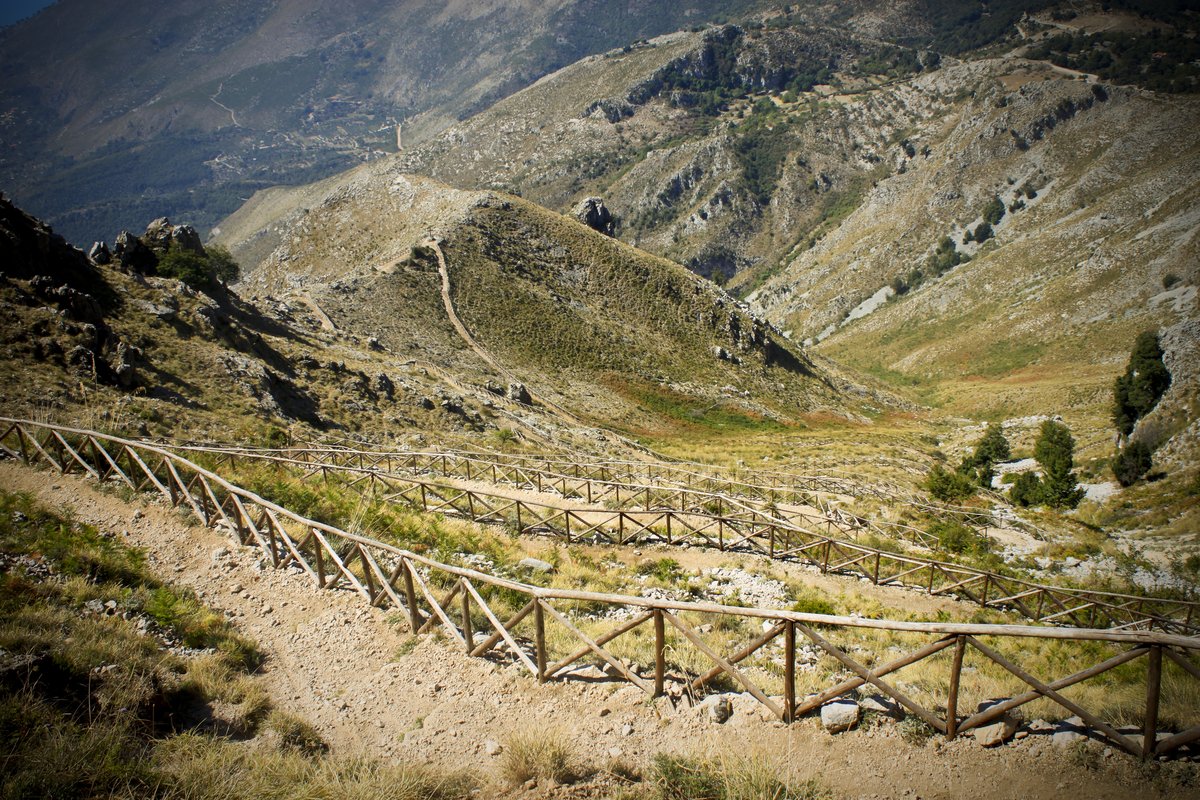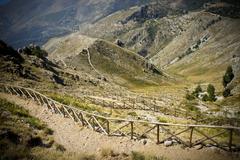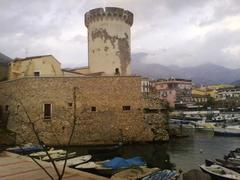
Visiting Hours, Tickets, and Tips for Cisterna Campo Lancia in Formia, Italy
Date: 23/07/2024
Why Visit Cisterna Campo Lancia?
Cisterna Campo Lancia in Formia, Italy, stands as a remarkable testament to the advanced engineering and rich history of the Roman Empire. Nestled along the ancient Via Appia, this cistern was constructed to support the infrastructure needs of bustling Roman settlements and travelers, highlighting the strategic importance of Formia during ancient times. The Via Appia itself was one of the earliest and most significant Roman roads, crucial for trade and military movements (Ancient History Encyclopedia). Built using opus caementicium, a form of Roman concrete, the cistern exemplifies the ingenuity of Roman hydraulic engineering, designed to collect and store rainwater to ensure a reliable water supply (Rome Art Lover). Over the centuries, Cisterna Campo Lancia has witnessed various historical phases, from the decline of the Roman Empire to the medieval period, the Renaissance revival, and into the modern era where it is now a protected archaeological site. This guide provides a comprehensive overview of Cisterna Campo Lancia’s history, cultural significance, visitor information, and practical tips for an enriching visit.
What You’ll Find in This Guide
- Introduction
- Ancient Origins
- Roman Engineering Marvel
- Medieval Period
- Renaissance Revival
- Modern Era and Preservation
- Archaeological Discoveries
- Cultural Significance
- Visitor Information
- Visiting Hours
- Tickets
- Travel Tips
- What to Wear
- What to Bring
- Local Etiquette
- Nearby Attractions
- Visitor Experience
- Educational Programs
- Future Prospects
- FAQ
- Conclusion
Explore the History and Visitor Information for Cisterna Campo Lancia in Formia
Ancient Origins
Cisterna Campo Lancia, located in Formia, Italy, is a site steeped in history, dating back to ancient Roman times. The area was originally part of the Roman Empire, serving as a crucial point along the Via Appia, one of the earliest and strategically significant Roman roads. The Via Appia connected Rome to the southern parts of Italy, facilitating trade, military movements, and cultural exchange. The cistern itself was likely constructed during this period to support the infrastructure needs of the bustling Roman settlements and travelers (Ancient History Encyclopedia).
Roman Engineering Marvel
The cistern is a testament to Roman engineering prowess. Built using opus caementicium, a form of Roman concrete, the structure has withstood the test of time. The cistern was designed to collect and store rainwater, ensuring a reliable water supply for the local population and travelers. Its construction involved intricate planning and execution, showcasing the advanced understanding of hydraulics and construction techniques possessed by Roman engineers (Rome Art Lover).
Medieval Period
During the medieval period, the significance of Cisterna Campo Lancia evolved. As the Roman Empire declined, the area saw a shift in control and usage. The cistern continued to serve as a vital water source for the local communities. The medieval era in Formia was marked by the construction of fortifications and the adaptation of Roman structures for new purposes. The cistern’s robust construction allowed it to remain functional and relevant through these turbulent times (Medieval Histories).
Renaissance Revival
The Renaissance period brought renewed interest in classical antiquity, and Cisterna Campo Lancia was no exception. Scholars and architects of the time studied Roman engineering marvels, drawing inspiration for contemporary projects. The cistern’s design and functionality were admired and documented, contributing to the broader understanding of Roman engineering techniques. This period also saw efforts to preserve and restore ancient structures, ensuring their survival for future generations (Renaissance Society of America).
Modern Era and Preservation
In the modern era, Cisterna Campo Lancia has been recognized for its historical and cultural significance. Efforts have been made to preserve the site and make it accessible to the public. The cistern is now a protected archaeological site, with ongoing research and conservation projects aimed at maintaining its structural integrity and historical value. Visitors can explore the cistern and learn about its history through guided tours and informational displays (Italian Ministry of Culture).
Archaeological Discoveries
Recent archaeological excavations at Cisterna Campo Lancia have uncovered artifacts and structural details that provide deeper insights into its historical usage. These discoveries include pottery fragments, tools, and remnants of ancient construction materials. The findings have helped historians piece together the daily lives of the people who relied on the cistern, shedding light on the broader historical context of the region (Archaeological Institute of America).
Cultural Significance
Cisterna Campo Lancia holds cultural significance beyond its historical and architectural value. It serves as a symbol of the enduring legacy of Roman engineering and the continuous human presence in the region. The site is a focal point for local cultural events and educational programs, fostering a deeper appreciation for the area’s rich history among residents and visitors alike (Cultural Heritage of Italy).
Visitor Information
Visiting Hours
- Monday to Friday: 9:00 AM - 5:00 PM
- Saturday and Sunday: 10:00 AM - 6:00 PM
Tickets
- Adults: €10
- Children (under 12): €5
- Seniors (65+): €7
Tickets can be purchased online or at the entrance. Guided tours are available for an additional fee.
Travel Tips
- Wear comfortable walking shoes.
- Bring water and sun protection, especially during summer.
- Check for any special events or temporary closures before your visit.
Nearby Attractions
- Formia Archaeological Museum
- Villa of Tiberius
- Temple of Jupiter Anxur
Accessibility The site is partially accessible to visitors with mobility issues. Contact the visitor center for more detailed information.
Visitor Experience
Today, visitors to Cisterna Campo Lancia can experience a blend of history and natural beauty. The site is situated in a picturesque setting, offering stunning views of the surrounding landscape. Guided tours provide detailed information about the cistern’s history, construction, and significance, enhancing the visitor experience. Interactive displays and multimedia presentations bring the ancient world to life, making the visit both educational and engaging (Visit Lazio).
Educational Programs
Educational programs at Cisterna Campo Lancia cater to a wide range of audiences, from school groups to history enthusiasts. These programs include hands-on activities, lectures, and workshops that delve into various aspects of Roman engineering, archaeology, and local history. The aim is to foster a deeper understanding and appreciation of the site’s historical importance and its role in the broader context of Roman civilization (Italian Archaeological Society).
Future Prospects
Looking ahead, the future of Cisterna Campo Lancia appears promising. Continued research and conservation efforts will ensure that the site remains a valuable resource for historical and cultural education. Plans for enhanced visitor facilities and expanded educational programs are in the works, aiming to attract a broader audience and provide a more immersive experience. The ongoing commitment to preserving and promoting Cisterna Campo Lancia underscores its enduring significance as a historical and cultural landmark (European Heritage Network).
FAQ
What are the visiting hours for Cisterna Campo Lancia?
- Monday to Friday: 9:00 AM - 5:00 PM
- Saturday and Sunday: 10:00 AM - 6:00 PM
How much are tickets to Cisterna Campo Lancia?
- Adults: €10
- Children (under 12): €5
- Seniors (65+): €7
Is Cisterna Campo Lancia accessible for visitors with mobility issues?
- The site is partially accessible. Contact the visitor center for more detailed information.
What are some nearby attractions?
- Formia Archaeological Museum
- Villa of Tiberius
- Temple of Jupiter Anxur
Key Takeaways and Final Thoughts
Visiting Cisterna Campo Lancia offers a unique opportunity to delve into the rich historical tapestry of Formia, Italy. This ancient Roman cistern not only exemplifies the advanced engineering skills of the time but also serves as a cultural landmark that has withstood centuries of change. From its origins along the Via Appia to its role in medieval and Renaissance periods, Cisterna Campo Lancia remains a focal point of historical and educational significance. Efforts by the Italian Ministry of Culture ensure that this site is preserved for future generations, allowing visitors to appreciate its architectural marvels and historical context (Italian Ministry of Culture). With its blend of history, natural beauty, and educational programs, Cisterna Campo Lancia continues to attract history enthusiasts and travelers alike. Whether exploring its ancient chambers or participating in guided tours, visitors are offered a profound glimpse into the world of Roman engineering and the enduring legacy of this remarkable site (Visit Lazio).

